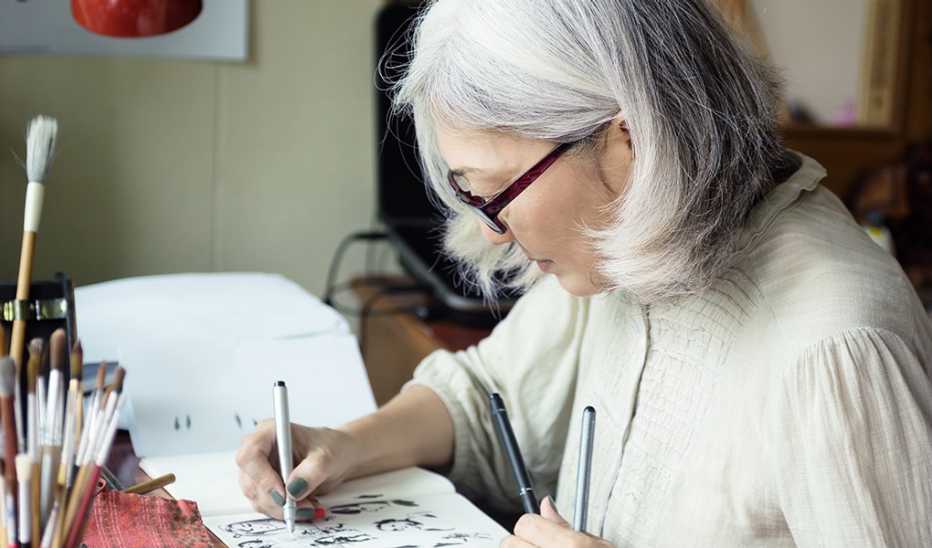Challenges


Quick Win
Creating a portrait of a new friend may help you remember their face and build new brain connections.
Try This Today
- Start by drawing a circle. Then, draw another circle of approximately equal size slightly above the first circle so they overlap vertically.
- Draw a vertical and a horizontal line along the center of the two circles. This will give you the foundation of a human head.
- Now is the time to add more guiding lines for the facial features. First, draw a vertical line slightly in from each side of the circles. These will tell you roughly where the forehead and cheekbones sit.
- Beginning in the center of the face, where the vertical and horizontal lines intersect, draw a triangle for the nose. As a rough guide, the bottom of the triangle should line up with the bottom of your top circle, but experiment with different sizes of triangles to play with nose size and shape.
- Draw a short horizontal line a little less than halfway between the bottom of the nose triangle and the bottom of the lower circle. This is roughly where the mouth will go.
- For the eye sockets, begin by drawing a triangle that’s been flipped on its side, with the tip of the triangle beginning at the side of the top of the nose and extending out to the cheekbones. Draw a triangle of equal size and shape on the other side of the face.
- You now have a basic outline of the human face. Use the basic shapes you’ve created to help you fill in the facial features, keeping your new friend in mind. Don’t worry too much about making it perfect, just try to have fun!
Why
If you haven’t tried drawing since art class in school, it may be time to dust off your pencils. Drawing can help you remember things, and that could include faces. In a study published in 2018 in the journal Experimental Aging Research, 48 adults — half older and half younger — listened to words read aloud and either drew the items or wrote down the names several times. While both groups remembered a greater proportion of drawn words compared to written words — around twice as many — drawing also aided the memory of older adults more than that of younger adults. By learning to draw faces, you can become more aware of general face shapes, proportions and facial features, which may help you recognize those details when you see them in real life. Plus, “research already suggests that getting training in the arts, or practicing an art, strengthens parts of a person’s brain,” Nora Volkow, M.D., director of the National Institute on Drug Abuse, said in a 2020 interview.










More From Staying Sharp
Scrambled Headline Showdown
Play a quick word game based on news or magazine headlines
12 Ways to Avoid Loneliness
U.S. surgeon general offers advice and a call to action
Pen a Thank-You Note
Handwritten is heartfelt